Propellers CPP and FPP
The terminal part of the propulsion system
Masson-Marine design, build, and install the entire system constituting the propeller and its “carrier”. The unit includes the propeller shaft, the nozzle (if applicable), as well as the stern tube. We also realise the complete assembly that is dedicated to the connection to the gearbox.
There are two types of propellers in the field of professionally used ships:
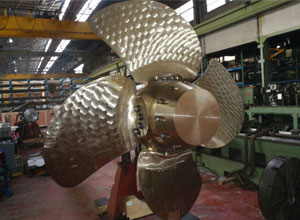
- The controllable pitch propeller (CPP) or swivel blade propeller
- The fixed pitch propeller
Each of these types has its pros and cons. For further information, please see the chapters below.
Why Use A Controllable Pitch Propeller?
Today, ships need higher efficiency at the lowermost cost.
Controllable pitch propellers are particularly suitable for workboats that require variable propulsion power conditions in terms of speed, bollard pull, and maneuverability (as in the case of fishing boats, tug boats, supply vessels and other utility ships, for example).
They offer numerous technical and economic advantages.
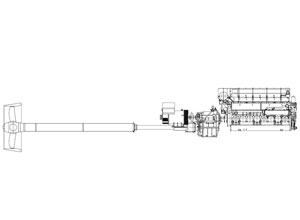
Advantages Of A Controllable Pitch Propeller
Among the advantages of a controllable pitch propeller, here are the major ones:
- Higher propulsion efficiency than with a fixed pitch propeller, optimising speed and bollard pull performances.
- Better maneuverability: passing from “ahead” to “reverse” occurs smoothly and without dead time, simply through propeller pitch inversion. The very short response time while maintaining full power ensures higher safety for the ship and crew, and considerably reduces the stopping distance of the vessel.
- More efficient use of the diesel engine: 100 % engine power remain available at the propeller in every situation (cruising, trawling, maneuvering, etc.) What is more, a CPP allows constant operation of the engine at its nominal speed, thereby reducing significantly the fuel consumption, maintenance cost, and clutch disc wear.
- Advantage of power take-off drives fitted to the transmission With the engine at constant speed, the clutch-type PTO can drive pumps (for instance) for on-board machinery. So-called “live” permanent-drive PTOs may move alternators. In this way, the power requirement, the cost, fuel consumption and space requirement of auxiliary engines can be cut down.
Download our Data Sheet regarding CPPs
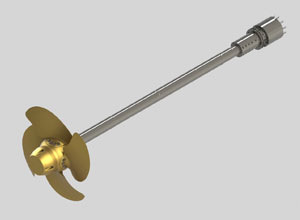
Quick Menu
New Offers & New
Products
-
New Brochure 2024
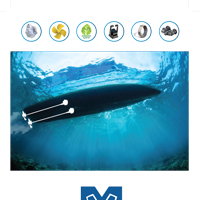 Download!
Download! -
Partnership : Become one of our agents!
 Let’s work together to reinforce and develop an effective network. Sign Up Now!
Let’s work together to reinforce and develop an effective network. Sign Up Now! -
Interactive Map : Our network at your service!
 Need new equipment or spare parts? Our interactive map is now on line. Find all of our agents with one click only!
Need new equipment or spare parts? Our interactive map is now on line. Find all of our agents with one click only! -
New Aluminium Gearbox 2024
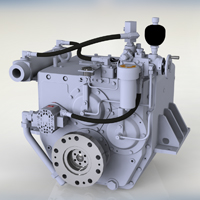 We are currently finalizing our new aluminium gearbox : ALW550 with ratio 1.326 to 3.000 designed for high rpm engines and light ships. Ask us for more details.
We are currently finalizing our new aluminium gearbox : ALW550 with ratio 1.326 to 3.000 designed for high rpm engines and light ships. Ask us for more details.







